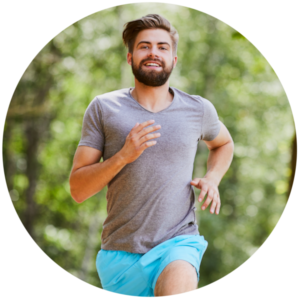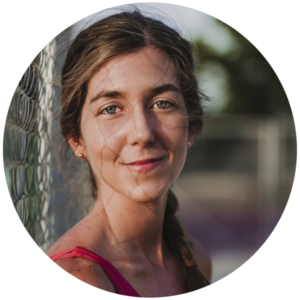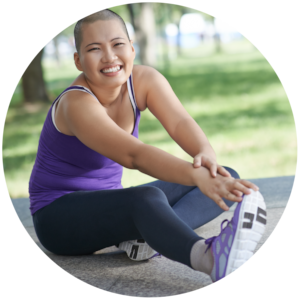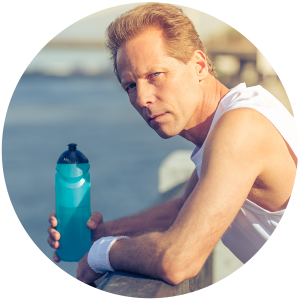The journey is not always the destination
What personal sports therapy offers you
The outstanding feature of personal sports therapy is training that is perfectly tailored to your needs and individual scheduling.
My focus in sports therapy is the rehabilitation of injuries.
Individual rehabilitation sport is also possible for posture correction or for certain pain symptoms.
Partner training or training in a small group is possible on request.
The training can take place either in my training room, at your place or in nature.
I work on behalf of rehabilitation centers such as the Sport-Gesundheitspark Berlin e. V. in Zehlendorf and Olympiapark .
There I offer rehabilitation sports in the areas of medical strength training, back training, cardiac sports and pulmonary sports.
I am licensed by the German Olympic Sports Confederation as a specialist trainer in rehabilitation sports in the field of orthopaedics and internal medicine.
I also support you in your training with my medical expertise.
Healthy exercise is an important component of therapy, especially in the treatment of postural and joint damage, chronic illnesses or pain.
In personal sports therapy, I offer you individual one-on-one training to improve your fitness, condition, resilience and, if necessary, rehabilitation.
Fitness
Improved fitness increases your well-being and makes you more resilient.
Fit people are healthier, fall ill less often and live longer and happier lives.
In addition to appropriate physical activity, fitness includes an optimal diet, a good work-life balance, adequate sleep hygiene and the ability to regenerate.

Condition
The aim of fitness training is to improve physical performance.
Very complex aspects influence the planning of the training.
These include, in particular, strength, endurance and flexibility.
Mental abilities and lifestyle also influence performance.

Resilience
A healthy resilience makes you more resistant to stress.
Resilience enables psychological resilience to cope with life crises, injuries or illnesses, for example.

Rehabilitation
Medical rehabilitation in personalized individual training includes the restoration of fitness, condition and resilience after accidents, injuries or illnesses.
Joint wear and tear and postural damage are also taken into account in rehabilitation sport.
This training is very varied and individual.

My approach is multidisciplinary.
You will not only receive traditional training instructions from me.
I support you in your training, for example with osteopathic applications, kinesiology taping or other manual therapy techniques.
I support your motivation or regeneration with hypnotherapy.
I use the teachings of traditional Chinese medicine to optimally supplement your training with acupuncture, nutrition or herbs.
Prevention & rehabilitation
Prevention in sport focuses on previous sports injuries.
It is important to find out why the injury occurred.
The answers you get depend on the questions.
Was it carelessness?
Did training errors play a role?
Was there a problem with a myofascial chain?
Was there an osteopathic lesion?
Was the energetic balance correct according to the teachings of traditional Chinese medicine?
Were there any mental “blockages”?
In addition, sport-specific injury patterns can be treated preventively in a variety of ways, even if an injury has not yet occurred.
My findings and diagnostics are based on reports from clinics, specialists or rehabilitation facilities.
I focus on osteopathic and orthopaedic examination techniques for previous injuries.
I attach great importance to standardized examination techniques (i.e. referenced in specialist literature with sufficient sensitivity and specificity) in order to make findings verifiable between doctors, therapists and, if necessary, trainers.
In addition to diagnosis, tests are used to monitor progress during treatment.
In addition to physiotherapeutic therapy and the return to regular (competition) training, you will receive individual rehabilitation training from me.
In addition to functional training, I have had good experience with Spiral Dynamics techniques and the Redcord sling system in prevention and rehabilitation therapy.
Everything from a single source
My personal rehabilitation training has different facets.
Training
Pilates
We can achieve a lot with the classic Pilates method.
Strength, endurance and flexibility are the special features of Pilates training.
No muscle is considered in isolation in the Pilates method.
Rather, it is about the interplay of interrelated muscle-fascia chains.
The consideration of functional relationships between posture and movement is what makes this training so effective.
In addition, there is intensive mental training: all movements in Pilates are performed in rhythm with breathing.
All movements require a high degree of discipline, precision and concentration.

The Pilates method can look back on around 100 years of experience.
It was at this time that Joseph Pilates began to develop his movement theory.
Although I focus on the classical Pilates method, I am inspired by modern approaches.
Pilates in rehabilitation (and prehabilitation) has received increased attention in recent years.
In addition to its almost 100-year history, another advantage of Pilates is that (almost) all exercises are performed on a gym mat.
This means that movements are fixed against the floor.
In contrast to yoga, for example, there are no standing exercises in Pilates.
The aim of my training is to teach you personalized exercises that you can do on your own and in so-called flows (a sequence of exercises that flow into one another) at home.
You will develop sufficient body awareness to be able to perform the exercises precisely and safely yourself.
Endurance sport
The second focus of my training is endurance training.
In general, endurance describes the ability to maintain a certain level of exertion for as long as possible.
Exhaustion or fatigue should be delayed through training.
In other words, the body should adapt to the changed load.
In particular, the cardiovascular system, muscles, joints, brain and other organs are trained.
Various other aspects are included in endurance training, such as mental abilities, fatigue resistance or physiological processes of energy supply.

I offer a special running school for the practical implementation of endurance training.
I have a special focus on physiological running over the ball of the foot (forefoot or midfoot).
This running technique also makes jogging interesting for people with joint problems or who are overweight.
Of course, walking – or Nordic walking in particular – is also an excellent form of endurance training.
Cycling or inline skating are suitable supplements or alternatives to running.
I can support you in other endurance sports with sports medicine know-how.
In addition to teaching the specific forms of movement, my training also consists of load control.
The control of training stimuli in particular depends very much on your individual fitness and any pre-existing conditions.
Interval training is a very good form of strength endurance training.
Individual exercises are repeated in short, intensive intervals.
The load stimulus is significantly higher than when running or walking.
Interval training can also be implemented very well as circuit training.
I would also like to empower you to implement a training plan independently for endurance training.
We will meet at certain intervals for a check-up.
If necessary, I supplement the training with modern functional training, specific fascia training and mobilization and stretching exercises.
My work is also inspired by modern medical strength training and the ball exercises of functional kinetics (FBL) according to Klein-Vogelbach.
Define goals
Confucius (allegedly) said: “The way is the goal”.
Is that true?
Doesn’t that make us eternally aimless travelers?
In Daoism there is the concept of “Dao” (Tao), which someone translated as “the right way” in the sense of a right (or righteous) thought.
The highest goal in Daoism is, in a sense, immortality or enlightenment.
So in order to have (or achieve) a goal, it requires a right or righteous thought.
This is the path to the goal.
When I help you define a goal, it’s not just about what percentage of muscle mass you want to gain or how many kilograms you want to lose.
It’s always about more.
It’s about the question: Why do you want this?
What is it worth to you?
What do you want to achieve with it?
Assessment
If you want to know where the destination is, you also need to know where the beginning is.
In recent decades, sports science has developed a very large number of methods to make conditional abilities measurable.
The terms assessment, screening or testing refer to methods of measuring and evaluating strength, endurance, flexibility or functional movement sequences, for example.
Based on your training goals, I will offer you test procedures that are optimally tailored to quality assurance and progress monitoring.
In addition, I not only use sports-specific test procedures, but also standardized medical tests from the fields of orthopaedics, neurology and osteopathy, among others.
If required, I also offer laboratory tests.
For example, a blood test can provide information on whether the training stimuli are being set optimally.
An assessment set up especially for you enables target-oriented and effective training.
Health
Sporting activity is designed to maintain and improve health.
In addition to sport, I offer medical services that are usually integrated into the training.
An osteopathic treatment during a training session can treat movement restrictions.
Acute pain can be treated with acupuncture or osteopathy, depending on the cause. Kinesiology taping can optimize the quality of movement and body awareness.
Your musculoskeletal system can be ideally supported with various massage techniques.

Nutrition
Nutritional advice should be mandatory during training.
My dietary recommendations and herbal medicine applications are based on the teachings of both Traditional Chinese Medicine and Traditional European Medicine.
My dietary recommendations do not include animal-based foods.
Regeneration
Recovery is also sport.
The body needs regeneration to adapt to increased stress stimuli in order to trigger corresponding physiological processes in the body (supercompensation).
Regeneration must therefore be optimized in terms of duration and intensity.
Regeneration can only be implemented individually.
For competitive athletes, a relaxed endurance run is relaxing.
Other people recover by going for a walk, swimming or doing yoga followed by a tea ceremony, for example.
To ensure that you don’t lose sight of your goal, I am happy to provide advice or offer mental relaxation training, e.g. through hypnosis.
Conclusion
You decide which of these facets are relevant for you and how they are weighted based on your goals.
I will be happy to advise you on the individual possibilities of personal sports therapy.
When I look around, I always learn something: to always be yourself, and to express yourself, to have faith in yourself.
Do not go out and look for a successful personality and duplicate it.Bruce Lee
How will you serve the world?
What do they need that your talent can provide?
That’s all you have to figure out.Jim Carrey

